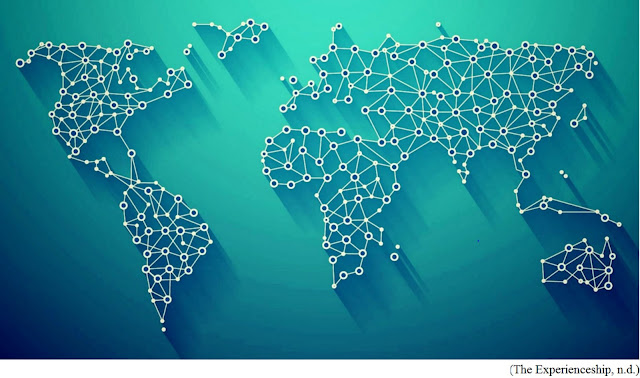In year 3 Tyrrell, education for sustainability was the focus for our
term 3 Humanities and Social Sciences (HASS) lessons. Students developed
attitudes and values, became aware and knowledgeable on sustainability issues
and motivated to take action (Australian Education for Sustainability Alliance
[AESA], 2016). They are now prepared to participate in Planet Ark’s National
Recycling Week next term.
In Civics and Citizenship Education (CCE), an aspect of HASS,
sustainability focuses on processes of engaging, valuing, connecting and taking
action (Gilbert & Hoepper, 2014). It is a lifelong endeavour which
challenges your children to think about the prosperity of the future by understanding
how sustainable patterns of living allow us to meet the needs of the present,
without compromising the ability of future generations to meet theirs (Australian
Curriculum, Assessment & Reporting Authority [ACARA], 2017a).
Recycling is recognised
as an important part of a sustainable lifestyle to preserve the resources used
by society and provide jobs for citizens (UAF Office of Sustainability, 2013). Involving
students in recycling schemes and other activities to improve the environment is
enjoyable and also teaches life-long lessons about teamwork, sorting, reusing
and taking care of the environment (Backer, 2017).
Students used Cool Australia’s (2017) ‘Bin it’ resource to develop their
understandings of what recycling is and why it matters. They discovered the
ways recycling helps to preserve resources available and reduce the impact of
processing these resources on the planet. This resource covered the common
types of waste found at school and home and how it can be disposed, how quickly
it breaks down and different ways waste can be reused or recycled (Cool
Australia, 2017). Students then expanded this new-found knowledge by applying
it to their classroom practices.
After as few weeks, students were then challenged to spread their
knowledge to other classrooms by presenting PowerPoints, posters and speeches. Twice
a week, groups of students went to other classrooms to provide information, give
demonstrations and monitor progress. Students developed a school-wide bin system
that helped others enact sustainability by sorting their waste effectively.
This required students to reflect
on learning and propose actions to issues, and communicate their ideas in multiple types of media. Through this,
it extended their critical thinking,
personal and social capacity by
allowing them to be innovative and provide solutions towards more sustainable
patterns of living (AESA, 2016).
Students became active thinkers and responsible members of a group, giving
them a sense of purpose and empowerment (Boyle-Baise & Zevin, 2014). By
developing civic values and skills that empowered your children to be leaders
in the transition to a sustainable future, teaching sustainability through CCE
enabled them to appreciate real-life citizenship obligations and opportunities
(Gilbert & Hoepper, 2014). Students made real choices and decisions and
through this discovered how people can work together to develop strategies for
a sustainable future.
I encourage you to discuss
with your child the practices they have learnt and consider continuing these
(where possible) at home to reinforce the ideas and concepts developed.
References
Australian Curriculum, Assessment and
Reporting Authority. (2017a). Cross-curriculum
priorities: Sustainability. Retrieved from http://www.australiancurriculum.edu.au/crosscurriculumpriorities/sustainability/overview
Australian Education for Sustainability
Alliance. (2016). What does
sustainability look like in the classroom. Retrieved from http://www.sustainabilityinschools.edu.au/classroom
Boyle-Baise, M., & Zevin, J. (2014). Young citizens of the world: Teaching
elementary social sciences through civic engagement. New York, NY:
Routledge.
Cool Australia. (2017). Activity:
Clean Up Australia – Smartboard lesson: ‘Bin it’. Retrieved from https://www.coolaustralia.org/activity/clean-up-smartboard-lesson-bin-it/
Gilbert, R., & Hoepper, B. (2014). Teaching humanities and social sciences:
History, geography, economics and citizenship in the Australian Curriculum (5th
Ed.). South Melbourne, Victoria: Cengage Learning Australia.
UAF Office of Sustainability. (2013). Why is recycling important. Retrieved
from https://www.uaf.edu/sustainability/recycling-program/why-recycle/index.xml
Images
Australian Curriculum, Assessment and
Reporting Authority. (2017b). Curriculum:
F-7 HASS [image]. Retrieved from http://www.australiancurriculum.edu.au/humanities-and-social-sciences/hass/curriculum/f-10
Australian Curriculum, Assessment and
Reporting Authority. (2017c). General
Capabilities: Critical and Creative Thinking [image]. Retrieved from http://www.australiancurriculum.edu.au/generalcapabilities/critical-and-creative-thinking/introduction/introduction
Australian Curriculum, Assessment and
Reporting Authority. (2017d). General
Capabilities: Personal and Social Capability [image]. Retrieved from http://www.australiancurriculum.edu.au/generalcapabilities/personal-and-social-capability/introduction/introduction
Green, H. (2016). How recycling works! [video]. Retrieved from https://www.youtube.com/watch?v=VlRVPum9cp4&t=20s
Mocomi. (2012). What is Sustainability: Mocomi kids [video]. Retrieved from https://www.youtube.com/watch?v=gTamnlXbgqc
Western Springs College. (n.d.). Recycling systems [images]. Retrieved from
http://www.westernsprings.school.nz/Notices/WasteManagement/WSC_Waste_Management.html















